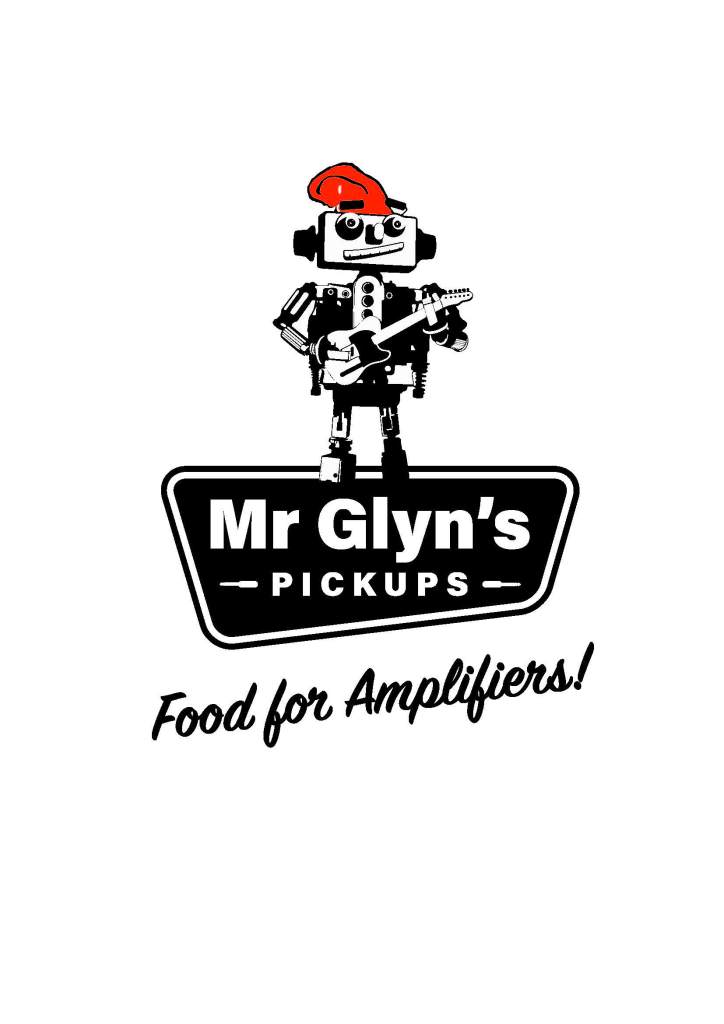'Sassy' P90 pickup Skateboard lap steel - I thought I'd have a bit of fun with this demo so I made a lap steel from an old skateboard deck.
P90 pickup Skateboard lap steel
'Sassy' P90 pickup Skateboard lap steel - I thought I'd have a bit of fun with this demo so I made a lap steel from an old skateboard deck.
TheTron pickup set is based around the legendary Gretsch pickups Of the 50’s and 60’s. To say TheTron has character is an understatement. TheTron is full and rounded with a well balanced mid range but with that distinctive ‘Clank’ that separates it from other pickups. The neck pickup is clear and fat and the bridge stands out from the mix without ever sounding harsh.

Over the years I’ve repaired a fair few old Gretsch pickups and noticed the best sounding ones are at the upper range for ohms. I’ve taken that design and tweaked it until I got the fullness I was looking for but without loosing clarity or clank.
Most of my pickups are made in collaboration with a professional player, but not TheTron. I started playing guitar at the age of 16 when I first heard Malcolm Young – a Filtertron through an almost clean valve amp. I didn’t feel I needed another set of ears for this one, I knew exactly what I wanted.
I needed this pickup set to be crystal clear with a clean amplifier but to come into its own when pushing an amp to clip. The neck pickup needed to be clear, full and chiming in both a big archtop and in the neck position of a Telecaster. The bridge pickup needed to have no shortage of character, a clean almost jangly tone when played gently but with enough go in it to push the front end of a valve amp to clip when you dig in.
TheTron is the perfect pickup as a Gretsch upgrade, for the modern player wanting something other than Gibson style humbuckers, rockabilly players after that traditional tone, jazz players or, like me, Malcolm Young fans. There’s so much you can to with The Tron.
For the modern player with one foot in the past.

And as for the name “TheTron”? – I think you have to be a Kiwi…

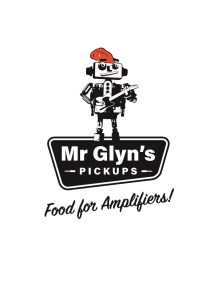
A big thanks to Brett Kingman in Aussie for his demo of Mr Glyns "Black Sand" humbucker size P90's. I love his relaxed approach while giving us a thorough listen to what these pickups can do.
The humbucker sized P90 is a great pickup – it sits tonally between a humbucker and and a strat type pickup. If your neck humbucker is a bit thick and woolly sounding for you, you want more clarity, or just want a different tone, then this one may be the answer. The physical size of this pickup is identical to that of a “normal” humbucker so it will pop straight in.
P90’s are different to other single coil pickups. They have a wide, flat coil similar to that of a Jazzmaster but the magnetic field is a very different shape. Fender single coil pickups have the coil wound around the magnet giving a focused, precise percussive sound. A P90 has 2 bar magnets underneath the coil; this broadens the magnetic window allowing the pickup to listen to a bit more string and thickens the sound. I chose Alnico V bar magnets for this model to help give some grit and power characteristic of a P90.
Of course, too much power and the pickup would sound too thick and bass heavy which is not its purpose. Too little power and it just won’t snarl.
Humbucker sized P90s are such a useful pickup. They sit tonally between a single coil and a humbucker (roughly speaking). and their physical size means they pop straight into any humbucker equipped guitar.
The development of my “Black Sand” pickup was a bit backwards. Usually I make a bridge pickup first and work from there but with this one the neck pickup came first. I had a customer ask for a neck pickup for an es335 to sound clearer than his existing Gibson humbucker. I sold a few neck pickups before thinking it would be a good idea to have a set. So I started work on the bridge pickup.
I wanted this bridge pickup to have clarity in the lower mids to stand out from humbuckers while having enough power to grit up nicely. I wanted it to be clean when tickled and to growl at you when you dig in. P90’s are all about dynamics. It had to match the existing neck pickup or work well as a stand alone in a HSS situation.
Of all the pickups in my range this one came together the quickest. There were only 4 or 5 prototypes and I was happy. Experience and intuition combined with a notebook where I’ve written down details of every experimental pickup I’ve made since 1995.
There were a load of prototypes in and out of a Les Paul, Tele Delux and PRS, through different amps and in the hands of different players. I never trust just my own ears with my pickups. I like to get opinions and suggestions from a few players before making any final decisions. I listen to what players say and I adjust prototypes accordingly, but at the end of the day the final decision is mine. I’m always aware of the phrase “a camel is a horse designed by committee”.
It took a while to get this one right. A pickup would sound great at workshop volume, them I’d play it in a band situation and it would be too boomy, too much like a humbucker. So I’d have a think and make another. In the end persistence paid off.
The pickups I finally settled on went into my Les Paul and off to a gig for the ultimate test, and that’s where they’re staying.
The neck “Black Sand” is a great match for either my “Integrity” or “Cloud Nine” bridge humbuckers or as a set with its equivalent “Black Sand” bridge humbucker sized P90.
I agonised over what to call this pickup set. I wanted a name that would reflect the apparent contradiction in P90’s. From the perspective of a humbucker player they are clear and chiming. From the viewpoint of a single coil player they are powerful and gritty. They’re one thing while looking like another. I wanted a oxymoron to reflect this contradiction, one that might include the unique magnetic structure that gives the P90 its character. So I went for a run along Muriwai beach to think. And there it was staring me in the face (literally). Muriwai has black volcanic sand due to its iron content and it’s magnetic. So I’ve called this set “Black Sand”.
I’m very happy with this pickup – hopefully you will be too.
“Cloud Nine”-hot humbucker
The “Cloud Nine”-hot humbucker is a versatile ROCK pickup with plenty of mids, plenty of power but with enough clarity to help you stand out in the mix.
I am at heart a man of ROCK.
Since the advent of the DiMarzio Super Distortion players have been able to get some power out of their pickups, enough to really push an amp.
The neck pickup needed to be clear and present but with enough power for some of those sweet lead lines. I wanted the bridge pickup to have power to scream with the best of them while retaining enough clarity to have definition. When I play a 7th chord I want to hear it as a 7th and not sound mushy like a John Deere tractor at full throttle. It’s a real danger with hot pickups that they lose character and tone. I needed a crunchy rhythm with strong mids and an over the top lead sound. I want to get squawking pinched harmonics whenever I please. Not only that but I need it it to clean up nicely and react well to a treble bleed circuit. A humbucker for every situation, for players not afraid of a bit of gain.
Not much to ask, eh!
I got through a lot of wire and magnets experimenting over the years to get this set right. I suppose I worked on it for about 5 years, different magnets, winds, wire thickness, insulation, winds per layer – there are a lot of factors. Whenever I felt I was close I used them at a gig to hear how they sat in the band. Pickups can sound quite different next to a drummer or in a mix. I tweaked and adjusted…
Eventually I was happy with the design and I was lucky enough to have legendary Kiwi band ‘Head Like A Hole’ help out with road testing. I knew if they came back from tour happy then I was on to a winner. They did.
When you get it right it feels so good, a sensitive pickup rich in harmonics is so much fun so I called it the “Cloud Nine” which how I felt at the end of it all.
This is the pickup set I gig with myself in my covers band now. I have them in an Epiphone Sheraton with treble bleeds on the volume pots. With this set up it works for everything from The Smiths to Metallica and all points in between. I don’t feel the need to swap guitar – these pickups work for everything.
Here are some sound samples recorded clean through a Fender Princeton Reverb-Amp. The overdrive sounds are using an Electroharmonix Soul Food. The guitar is a ’98 Les Paul Std with D’Addario 10-52’s. All of them with the same guitar, same amp, same settings, no reverb or eq added later.
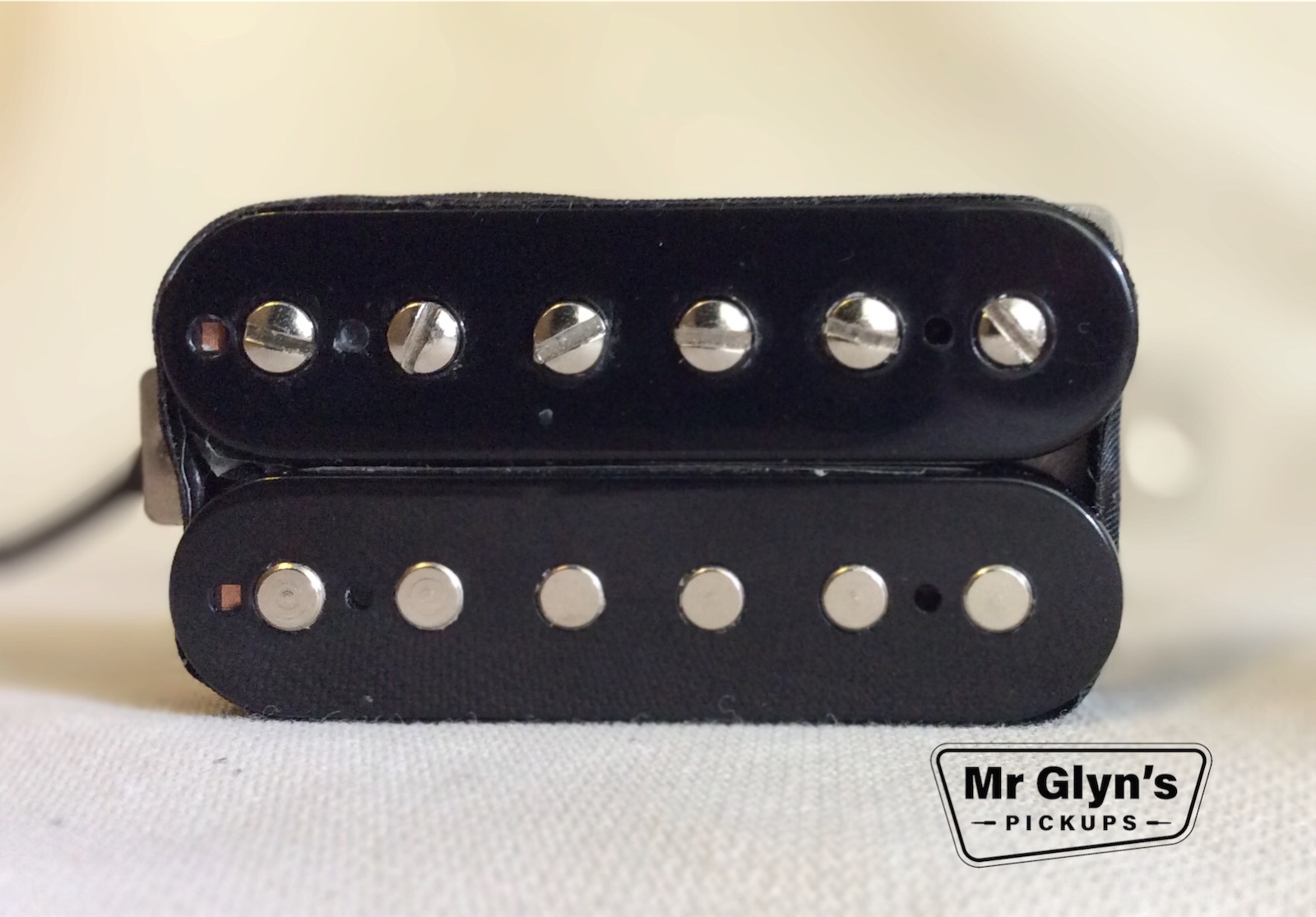
The Stratocaster has been around since 1954 and the legend continues. Reading the internet (!?) tells me there have been good and bad years or decades, guitars to avoid and ones worth hundreds of thousands of dollars. I’ve been repairing guitars since 1995 so I’ve played a lot of old Strats and analysed a lot of old pickups. Vintage pickups aren’t all great but the good ones are fantastic.
I’ve based my Vintage Strat set on the best of the old pickups I’ve had the pleasure of playing through . So I use AWG42 heavy formvar insulated wire – there’s something about the thickness of that insulation that just works with an old Strat pickup.
I’ve aimed for that old quacking chime that makes Strats wonderfully percussive but with a singing quality that’s so musical. Warm and clear with beautiful almost reverb-like clean tones – that’s what I want out of an old Strat. The neck needs to be fat, round and clear, the middle pickup needs to quack and the bridge a cut through twang without thinness. The all important ‘in between’ sounds in positions 2 and 4 must be balanced and characterful. Nothing says Strat more than these sounds.
The Bellbird set has been designed mainly for clean tones but they’re certainly not afraid to perform with a bit of gain. As part of a HSS set they’re great with one of my ‘Integrity’ humbuckers in the bridge position.
I agonised for months over names for my Strat pickup sets then during a camping trip to Tauwharanui Regional Park I heard my first Bellbird and realised that was the sound I had been looking for when I was designing this set. The comparison in tone between the Bellbird and the more common Tui seemed exactly what I had in my head when designing my Strat pickups. Bellbirds don’t just go tweet, there’s a depth and warmth in the tone. It’s so hard to describe sound and the difference between pickups but I think the difference between the Bellbird and the Tui sum up the difference between my vintage and hot Strat pickups. So I called them the Bellbird and the Tui.
These sound samples should show you what I mean:
Bellbird:
Tui:
Here are some sound samples recorded clean through a Fender Princeton Reverb-Amp. The overdrive sounds are using an Electroharmonix Soul Food. The guitar is an Alder body Strat with rosewood fretboard strung with D’Addario 10-52’s. All of them with the same guitar, same amp, same settings, no reverb or eq added later.
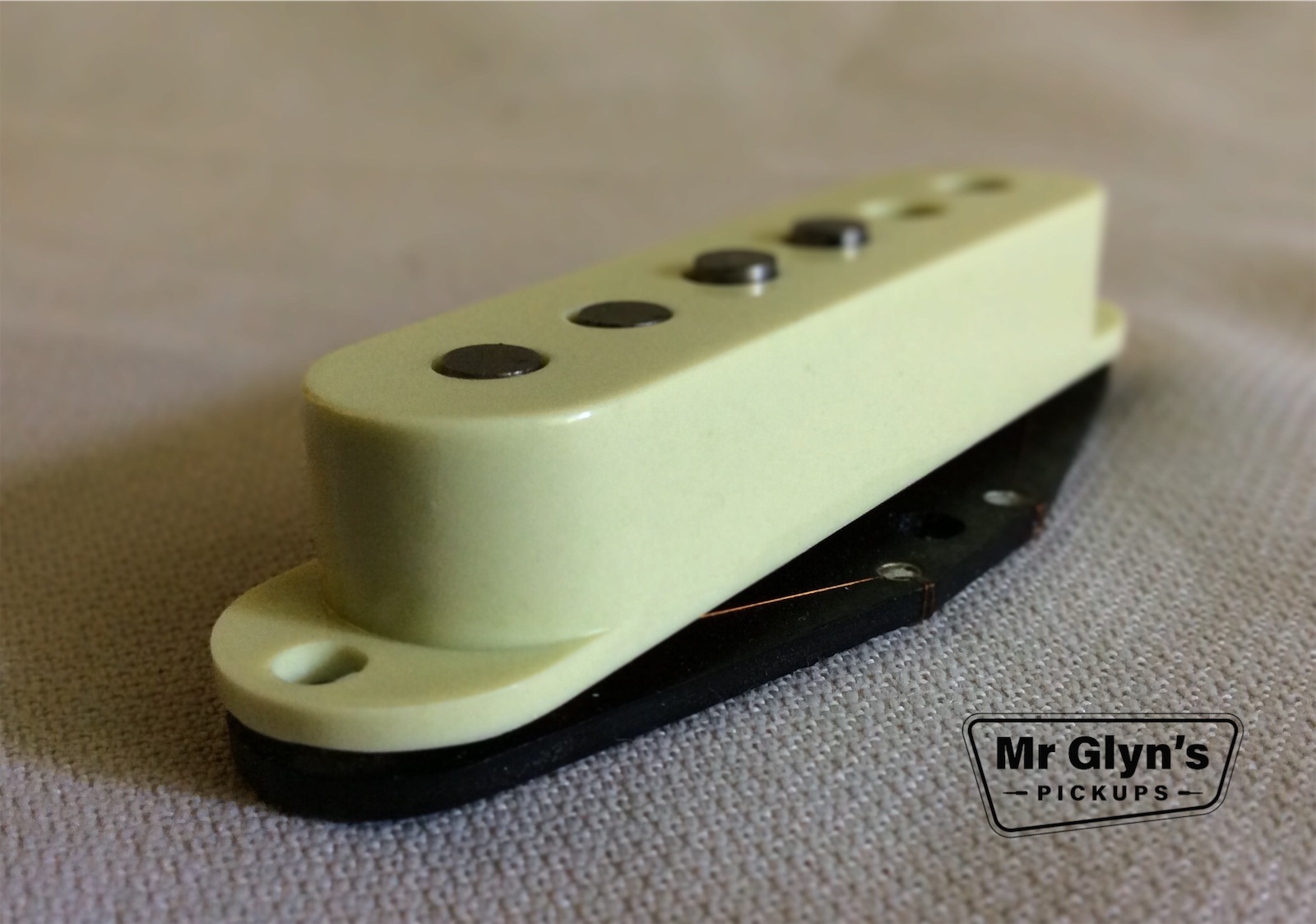
I’ve been repairing a few pickups recently and I thought I’d share this one with you. It’s a Fender Lead I Pickup that was sent to me by guitar repairer Jeff Baker from Oamaru.
The Fender Lead I was one of those obscure models that never really caught on and the pickup reflects that. It’s a little unusual and that’s what makes it interesting.
It even looks different with those square topped bobbins.

Not only is it unusual looking from the top but turn it over and it shows what it’s really all about. Those are 12 big adjustable poles screwed into substantial steel blocks and coupled to a powerful ceramic magnet.
This is clearly not a typical Fender pickup, this was designed to ROCK.

It came to me because it wasn’t working and typically one coil was showing ‘open circuit’ on the test meter. In these cases I can use the good coil as a reference to what the faulty coil should be. It had a dc resistance of 7.61 KOhms. Wiki told me the final dc resistance of the whole pickup is approx. 13KOhms so that gave me a pretty good indication of how I should wind it. That’s a powerful set of coils to go with that magnet.
A bit of maths, plenty of experience and some intuition and I had a plan for winding it. Detailed information just isn’t available for this kind of job.

I stripped the bobbin and wound the coil.
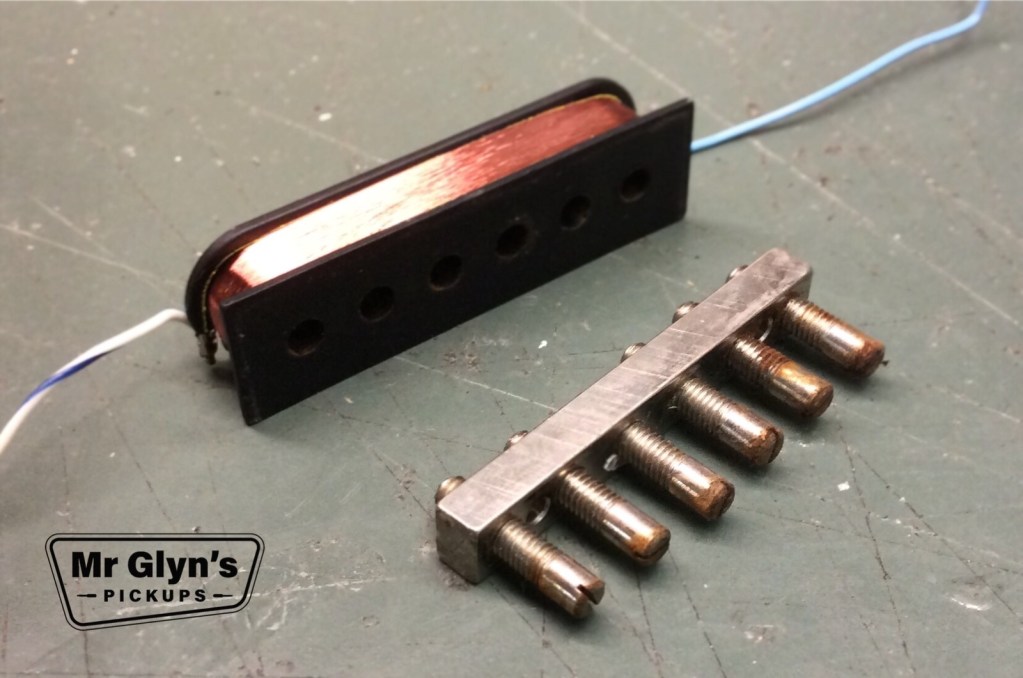
I potted it very lightly because these bobbins are made of butyrate that has a lower melting point than most modern ABS bobbins – I didn’t want it to deform with the heat, I wasn’t going to be able to get another bobbin.
Here you can see the chunky pole pieces, they’ll guide a fair bit of that ceramic magnet’s strength up to the strings.
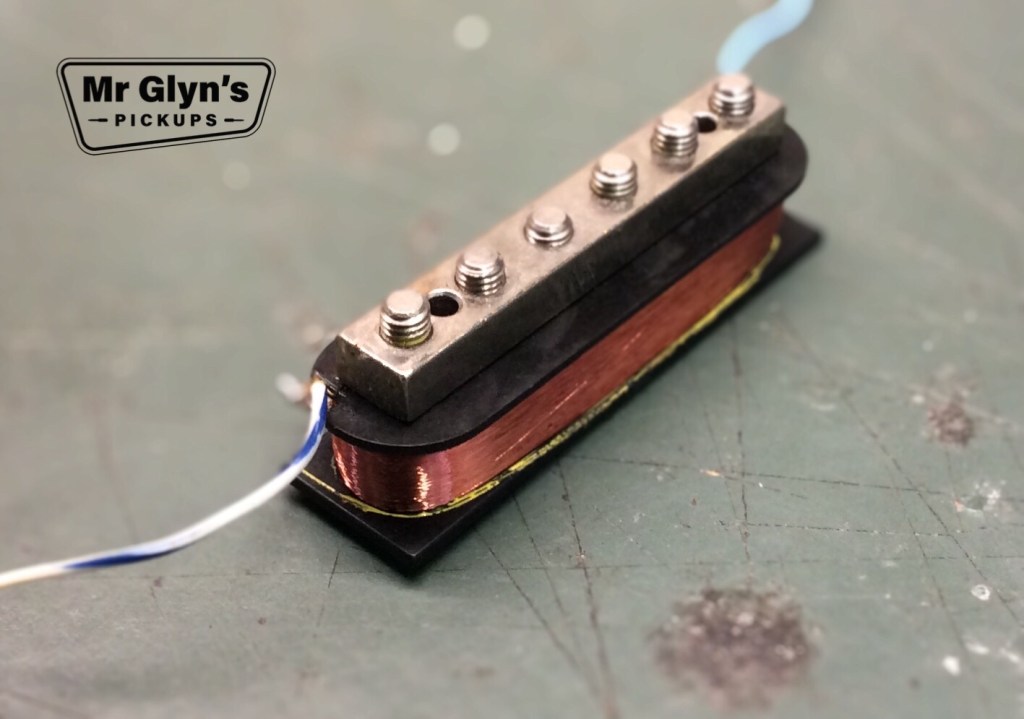
If you have a faulty pickup or are interested in my range of handmade pickups have a look at the website
https://www.youtube.com/c/MrGlynsPickups/videos
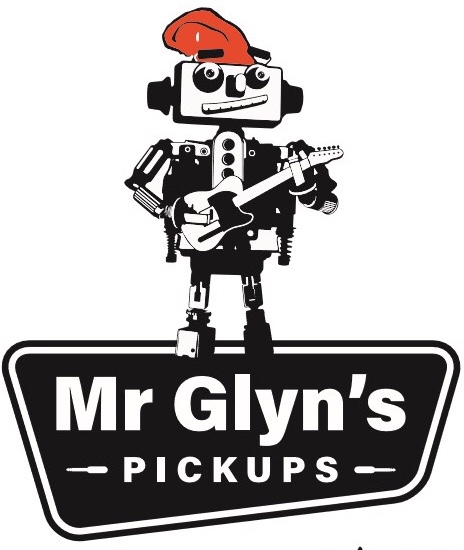
Thanks to https://www.thejamunit.com/ for showing us what the “Tui” hot Strat pickups can do.
“Tui” hot Strat pickups
I’ve wound a lot of Strat pickups since I started in 1995. I started off re-winding cheap pickups and then moved on to repairing old dead Fender pickups. Every experiment was written down in a notebook with tone comments. Back when I started there wasn’t much information available so there was a lot of reverse engineering and a lot of trying things out. That learning time was invaluable to developing instinct for how to change the sound of a pickup. I’ve still got the note book and I’m still adding to it.
In, I think, 2014 a customer of mine approached me wanting a set of Strat pickups. He’s a great blues player and had recently moved from using a Les Paul to a Strat. He described the sound he was after and it seemed to me it was the same as I’d been after myself so I put some time in to designing a pickup set for him.
The “Tui”- hot Strat pickups needed to be most definitely a Strat sound – I hear plenty of Strat replacement pickups that are fine but just not Strat-ish. Secondly I wanted a bit more power, just a bit, enough to make a good old valve amp clip a bit easier than a “vintage” pickup would. And there needed to be dynamics – tickle it and it’s clean, dig in and it grits up. As I was making the original version of this set for a player used to humbuckers I wanted to reduce the ”ping” of the attack. I’ve added steel base plated as standard to this set. This changes the shape of the magnetic field, broadening the harmonic window. They add a wee bit of power, a wee bit of bass and reduce that pesky ping.
The neck pickup needed to have “that” Strat sound with fullness and clarity. It’s the ‘go to’ sound for most Strat players. The middle pickup needed to have some ‘quack’ to it with its own distinctive personality. The bridge pickup shouldn’t be too thin, it needs to have plenty of highs but not too much of that ‘ping’ or it’s almost useless. Then there are the other sounds – positions 2 and 4, mistakenly referred to as ‘out of phase’. They are really just 2 pickups in parallel. It’s hard to predict what those sounds will be, there was a lot of experimenting.
So I consulted my old note book and wound a lot of pickups and fitted them in a few test Strats. I’ve been lucky enough to have some great players as repair customers and so I was able to get quite a few opinions.
Eventually I was happy and I fitted a set for my ex Les Paul customer and he loved them straight away. A few months later he contacted me to say he was still loving them. I love it when players do that.
I’ve fitted resulting sets into a lot of instruments and it turns out that not only blues players like them, they seem to work for everyone. I shouldn’t be surprised, the Stratocaster is such a versatile guitar, of course they do.
